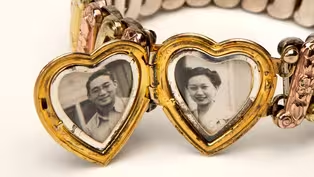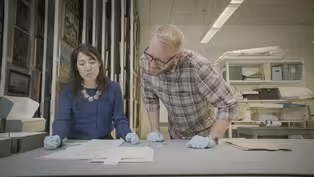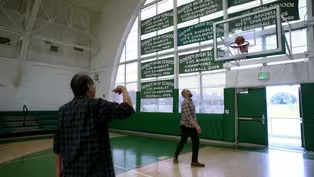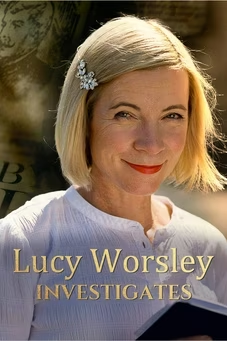
Reflecting on Japanese American Life in Postwar Los Angeles
Clip: Season 5 Episode 5 | 2m 30sVideo has Closed Captions
Artist Estelle Ishigo’s drawings document Japanese American life after incarceration.
After WWII thousands of formerly incarcerated Japanese Americans had no homes or jobs to return to. Many ended up in makeshift trailer parks provided by the state, the living conditions of which were said to be worse than in the incarceration camps. Artist Estelle Ishigo’s drawings serve as documentation of what life looked like in these trailer parks throughout Los Angeles.
Problems playing video? | Closed Captioning Feedback
Problems playing video? | Closed Captioning Feedback
Lost LA is a local public television program presented by PBS SoCal

Reflecting on Japanese American Life in Postwar Los Angeles
Clip: Season 5 Episode 5 | 2m 30sVideo has Closed Captions
After WWII thousands of formerly incarcerated Japanese Americans had no homes or jobs to return to. Many ended up in makeshift trailer parks provided by the state, the living conditions of which were said to be worse than in the incarceration camps. Artist Estelle Ishigo’s drawings serve as documentation of what life looked like in these trailer parks throughout Los Angeles.
Problems playing video? | Closed Captioning Feedback
How to Watch Lost LA
Lost LA is available to stream on pbs.org and the free PBS App, available on iPhone, Apple TV, Android TV, Android smartphones, Amazon Fire TV, Amazon Fire Tablet, Roku, Samsung Smart TV, and Vizio.
Providing Support for PBS.org
Learn Moreabout PBS online sponsorshipEstelle Ishigo was a white woman who was married to a Japanese-American man.
She volunteered to go with her husband to camp.
So, they were incarcerated at Hart Mountain, Wyoming, and they came back to Los Angeles after the war, and they lived in several of the trailer installations.
So she documented her experience.
There were seven trailer installations that were set up across Southern California, so, if you've ever parked in the long term parking area at Burbank Airport, that was the location of one of these trailer installations.
There were two in Burbank, there was one in Hawthorne, Long Beach, Torrance.
So, there are various installations set up and by many accounts, the conditions were even worse than America's concentration camps.
This is Harbor City, so this one may have been operated by a private company that provided employment as well as housing to returnees.
-We could think of this as typical of the kind of housing that people were provided with.
-Correct.
Yeah.
-Like, these are clothes hanging on clotheslines strung up to the telephone poles.
-That's right, and you see outlines of trailers in the background.
This one may have been inside one of the trailers.
-It's a sort of a camper, right?
This is what people bring on vacations, but these people had to live here for months on end.
-That's right.
I mean, in some ways, their facilities were not unlike where they were coming from, but it just shows just another upheaval that they had to endure, maybe up to the fifth time they had to to move in, you know, the same number of years.
This one is labeled.
BURBANK So this was at one of the two trailer installations.
-That's Bob Hope Airport.
-In Burbank, yeah.
-And you see the airplanes there?
-Yeah, that's right.
So this is related to what you see around New Year's.
The tradition is to pound mochi and the pounded rice cake is supposed to bring you good luck for the upcoming year.
And that's exactly what these residents are doing in this trailer installation.
And so you see the trailers in the background, and you see them participating in this activity of pounding mochi.
-Mochi, yeah, so the traditions went on no matter, sort of, where they were.
-Correct, yeah.
Video has Closed Captions
Clip: S5 Ep5 | 4m 25s | Artifacts at the Japanese American National Museum illustrate 20th century Los Angeles. (4m 25s)
From Little Tokyo to Crenshaw (Preview)
Video has Closed Captions
Preview: S5 Ep5 | 30s | After internment, Japanese Americans made L.A.'s Crenshaw neighborhood their home. (30s)
How Basketball Helped Revitalize the Yellow Brotherhood
Video has Closed Captions
Clip: S5 Ep5 | 4m 39s | Nick Nagatani shoots hoops and reflects on his history with the Yellow Brotherhood (4m 39s)
Providing Support for PBS.org
Learn Moreabout PBS online sponsorshipSupport for PBS provided by:
Lost LA is a local public television program presented by PBS SoCal


















